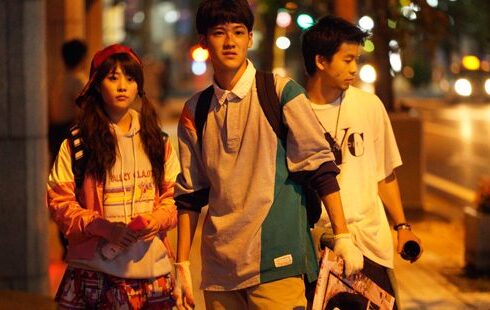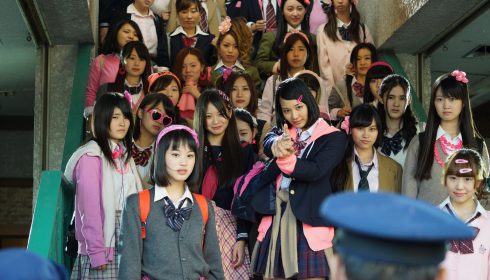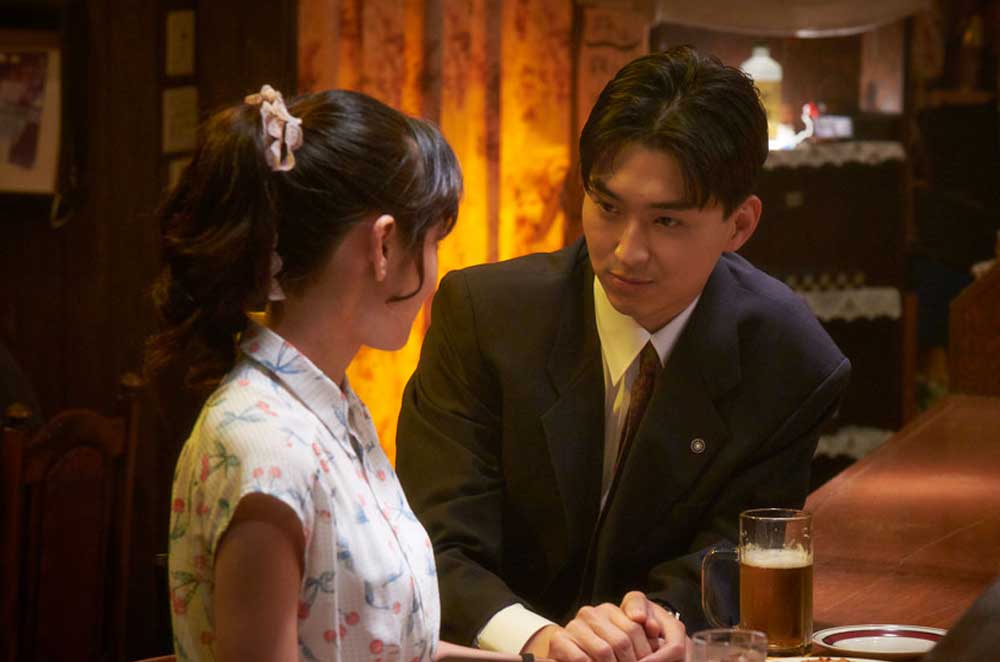On a rainy day near Buckingham Palace, I went to the Institute of Contemporary Arts for the sold-out showing of Japanese Girls Never Die (2016), directed by Daigo Matsui. I shuffled into the second row of seats at the front and got comfortable. Japan Foundation’s Senior Arts Program Officer, Junko Takekawa, spoke before the film. She informed us that it was well-received in Japan, but split the audience’s opinions down the middle either loving it or hating it.

The central role in this disjointed, non-linear narrative is Haruko Azumi (Yu Aoi), who lives at home with her senile grandmother, an overworked mother, and nonchalant, TV-entranced father. Beyond her estranged family and misogynistic workplace, she spends time with her childhood friend, Soga (Huey Ishizaki). Their relationship is a cold, slow silence that is hostile towards emotion, so opt for a longing stillness on the precipice of unreciprocated love.
Somewhere (and somewhen) else in the city, three friends-turned-graffiti crew careen through the streets, screaming and tagging every surface they pass. Yukio (Taiga) and Manabu (Shono Hayama) are inspired to become famous graffiti artists while Aina (Mitsuki Takahata) gets involved in the action too.
Their artist tag is what links these two sets of characters and marks the mysterious rift of time between them. The bright, monochromatic stencils of Haruko, a character whose deep personality grows quietly throughout the film, remind you of her future where she is mysteriously dubbed missing.
The direct translation of the Japanese title of the film is Azumi Haruko is Missing. This is more clearly linked to the storyline and less enigmatic than the English title, which highlights a key theme of the movie: how women are treated in Japan. An overview of the film written by Kate E Taylor-Jones (handed to each person as they walked into the cinema) described, “[the] vision of women as only defined by their age and perceived desirability as something that this film seeks to critique.” Once the movie began, it didn’t take me long to realise how seriously the director tackles the subject.
One of the most direct symbolic forces is a fierce, almost supernatural squad of schoolgirls that roam the streets at night hospitalising perverts through savage hit-and-runs. They are a metaphor that is brutal, honest, and hard to misinterpret. A teeth-gritting scene of everyday workplace misogyny shows Haruko’s 37-year-old female co-worker being described as “rotten” by her male boss and co-worker while she’s out making sales for the company. To top it off, those men earn seven times the salary of Haruko and her female colleague. After scenes like this, the school-girl’s actions in the streets edge from mindless violence to a justified, almost fulfilling response to something far uglier.
Whilst the girl gang is the most overt, loud, and bloody aspect of Daigo Matsui’s critique of female representation in Japanese culture, the main characters that propel the storyline portray a subtler, starker depiction of human relationships where women struggle for respect, attention, and love on a more intimate level. A short flashback into Haruko and Soga’s past reveals a special childhood bond that is contrasted by Haruko in her bedroom, now 27, staring at Soga’s pitch-black window in the house next door, unsure if she is waving at anybody.
Between the screaming laughter and the cold awkwardness, patient shots of the city inject culture and provide a moment to take in the sporadic plot. In all the critical bloodshed, spray-paint laughter, and serene city travel, I felt like I had some real time alone. Japanese Girls Never Die provided an intelligent, introverted journey in a sold-out cinema.








































